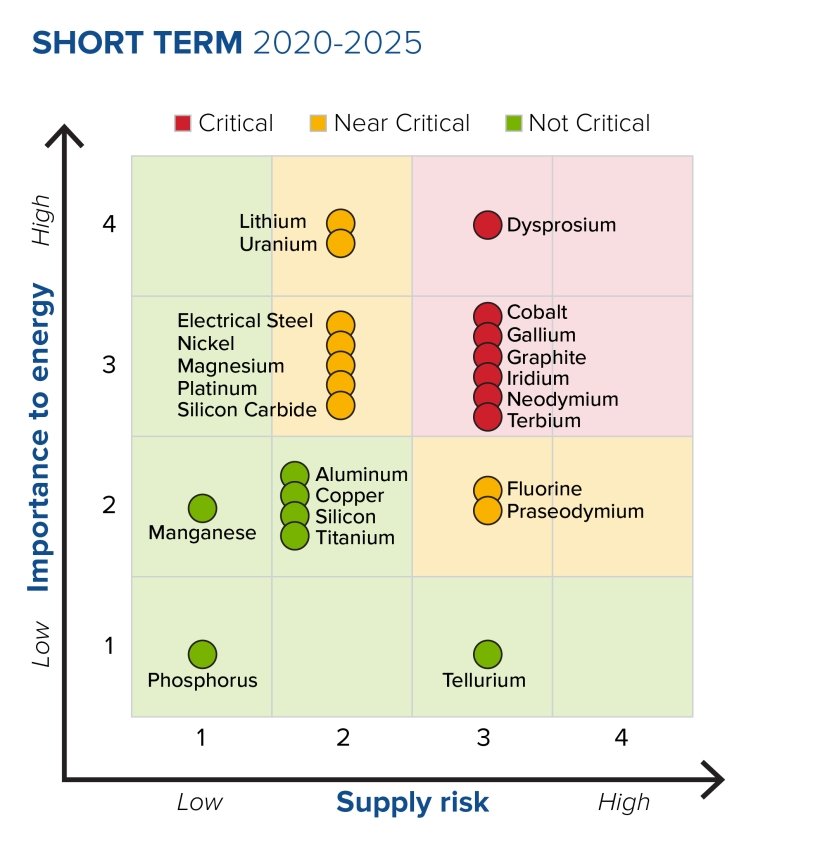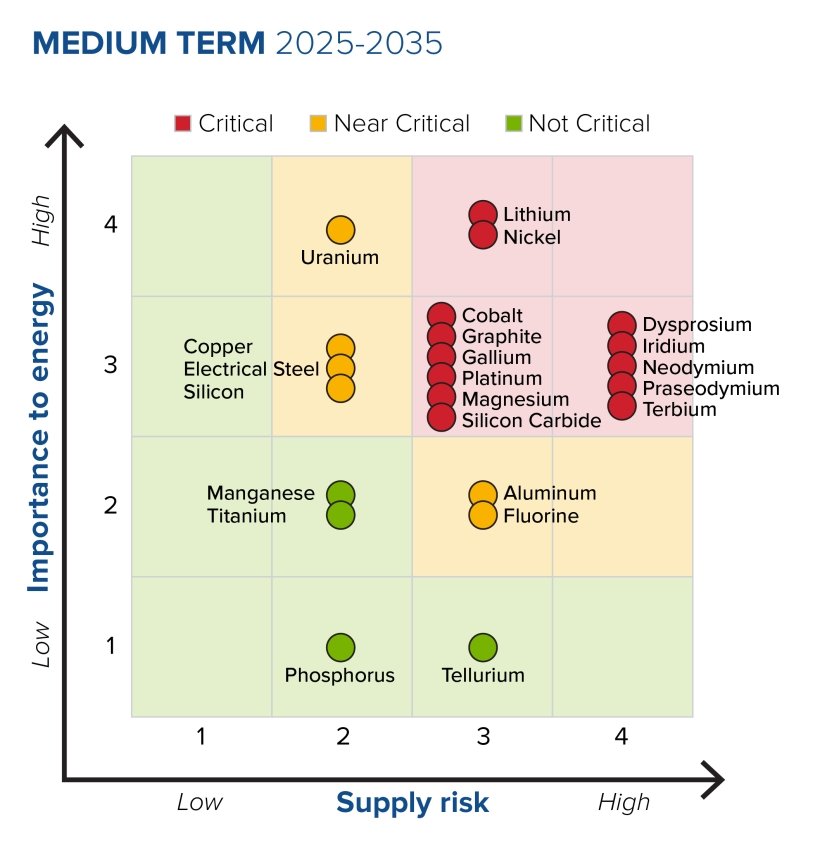The Department of Energy (DOE) has identified the materials that it considers critical to global clean energy technology supply chains for 2023 through to 2035. The list includes any non-fuel mineral, element, substance, or material that has a high risk of supply chain disruption, and are essential to clean energy technologies.
In addition to informing crosscutting DOE priorities including the Critical Materials Research, Development, Demonstration, and Commercialization Application Program (RDD&CA), the DOE Critical Materials List will inform eligibility for tax credits under the Inflation Reduction Act 48C.
“As our nation continues the transition to a clean energy economy, it is our responsibility to anticipate critical material supply chains needed to manufacture our most promising clean energy generation, transmission, storage and end-use technologies, including solar panels, wind turbines, power electronics, lighting, and electric vehicles,” said Alejandro Moreno, Acting Assistant Secretary for DOE’s Office of Energy Efficiency and Renewable Energy. “Ultimately, identifying and mitigating material criticality now will ensure that a clean energy future is possible for decades to come.”
Highlights of findings from this 2023 canaltaronja.cat CMA include the following:
- Rare earth materials used in magnets in EV motors and wind turbine generators continue to be critical.
- Materials used in batteries for EVs and stationary storage, such as cobalt, lithium, and natural graphite, are now considered to be critical due to the rampant growth of the EV industry.
- Platinum group metals used in hydrogen electrolyzers, such as platinum and iridium are critical due to an increased focus on hydrogen technologies to achieve net-zero carbon emissions, whereas those used in catalytic converters, such as rhodium and palladium were screened out due to the decreased importance of catalytic converters in the medium term.
- Gallium continues to be critical due to its use in light-emitting diodes (LEDs). In addition, the use of gallium has increased in magnet manufacturing and in semiconductors.
- Major materials like aluminum, copper, nickel, and silicon move from noncritical in the short term to near critical in the medium term due to their importance in electrification.
- Electrical steel is near critical due to its use in transformers for the grid and electric motors in EVs.
The full list of critical materials is below:
Critical materials for energy
- Aluminum
- Cobalt
- Copper
- Dysprosium
- electrical steel
- fluorine
- gallium
- iridium
- lithium
- magnesium
- natural graphite
- neodymium
- nickel
- platinum
- praseodymium
- silicon
- silicon carbide
- terbium
Critical minerals
Aluminum, antimony, arsenic, barite, beryllium, bismuth, cerium, cesium, chromium, cobalt, dysprosium, erbium, europium, fluorspar, gadolinium, gallium, germanium, graphite, hafnium, holmium, indium, iridium, lanthanum, lithium, lutetium, magnesium, manganese, neodymium, nickel, niobium, palladium, platinum, praseodymium, rhodium, rubidium, ruthenium, samarium, scandium, tantalum, tellurium, terbium, thulium, tin, titanium, tungsten, vanadium, ytterbium, yttrium, zinc, and zirconium.
For each of the critical materials identified in this Assessment, the DOE will develop an integrated strategy to address material-specific risks.


Source: energy.gov
Market updates since the previous report
- The world has witnessed a global surge in adoption of EVs, resulting in increased demand for vital components like lithium-ion batteries, rare earth magnets, electrical steel, and power electronics
- Doubling of offshore wind capacity has lead to compounded demand for rare earth magnets.
- Grid stationary storage is growing quickly but needs to increase significantly to reach net-zero emissions goals.
- Global hydrogen demand is expected to increase, leading to a rise in demand for iridium and platinum in electrolyzers.
- Silicon-based power electronics currently dominate the power electronics market ,but silicon carbide and gallium nitride are expected to grow significantly.
- The demand for electrical steel has increased due to the need for electric grid expansion and modernization as well as use in EV motors and charging infrastructure.
- Light-emitting diodes (LEDs) now dominate more than 50% of the global lighting market share.
- Crystalline silicon remains the dominant technology in the photovoltaic market due to its well-established status and lower production costs.
You can read the full Critical Materials Assessment here.
To stay informed on supply chain news and other important updates, stay connected with a customs broker.





